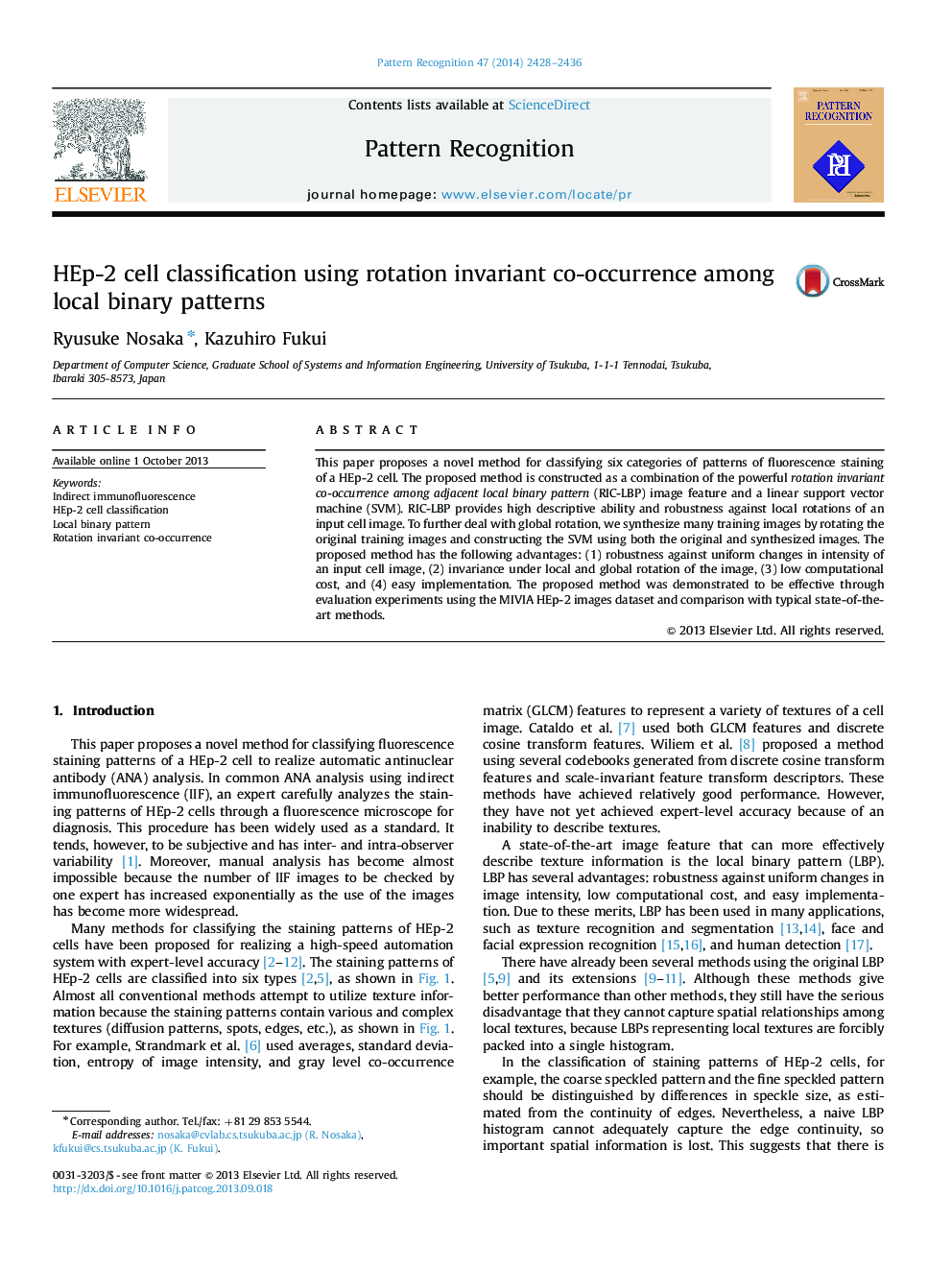| Article ID | Journal | Published Year | Pages | File Type |
|---|---|---|---|---|
| 530772 | Pattern Recognition | 2014 | 9 Pages |
•We propose an efficient method for HEp-2 cell classification using RIC-LBP.•RIC-LBP can provide a high descriptive ability and robustness to local rotation.•For global rotation, the classifier is trained with many synthesized training images.•Experiments were performed on the MIVIA HEp-2 images dataset.•The effectiveness was demonstrated compared with typical state-of-the-art methods.
This paper proposes a novel method for classifying six categories of patterns of fluorescence staining of a HEp-2 cell. The proposed method is constructed as a combination of the powerful rotation invariant co-occurrence among adjacent local binary pattern (RIC-LBP) image feature and a linear support vector machine (SVM). RIC-LBP provides high descriptive ability and robustness against local rotations of an input cell image. To further deal with global rotation, we synthesize many training images by rotating the original training images and constructing the SVM using both the original and synthesized images. The proposed method has the following advantages: (1) robustness against uniform changes in intensity of an input cell image, (2) invariance under local and global rotation of the image, (3) low computational cost, and (4) easy implementation. The proposed method was demonstrated to be effective through evaluation experiments using the MIVIA HEp-2 images dataset and comparison with typical state-of-the-art methods.
